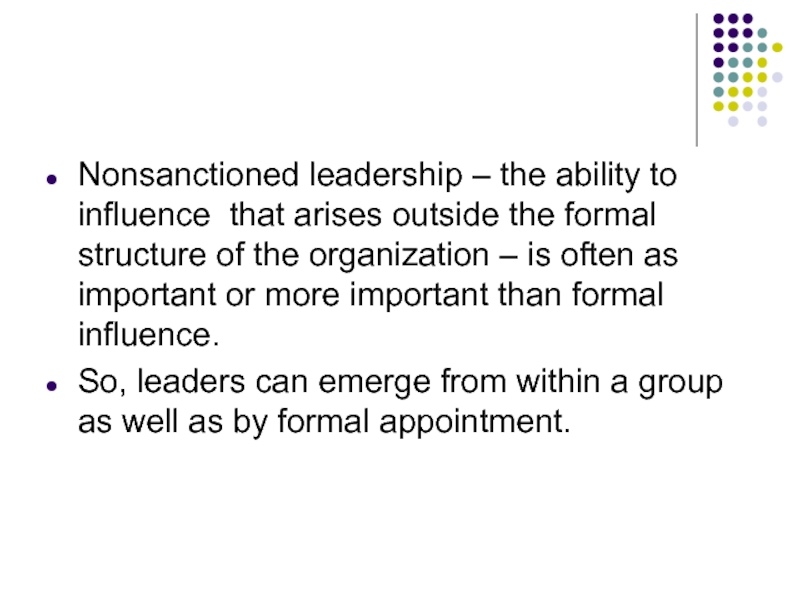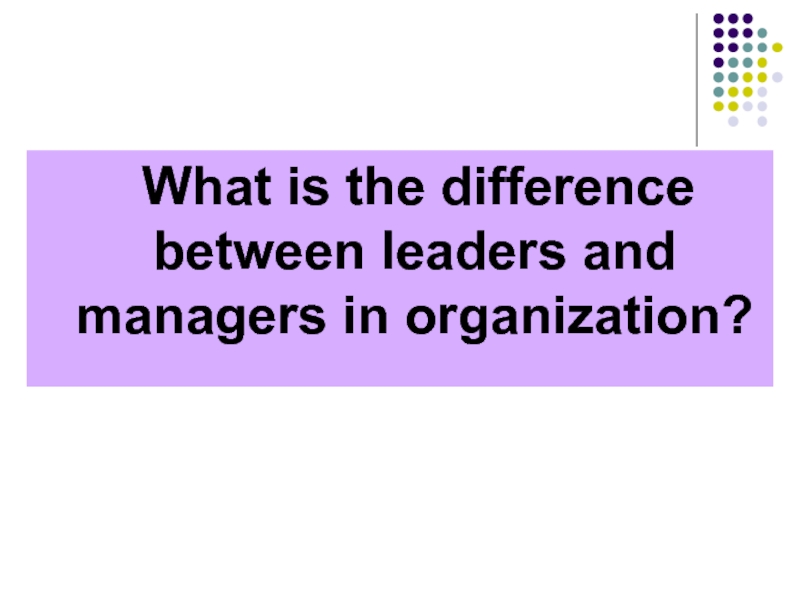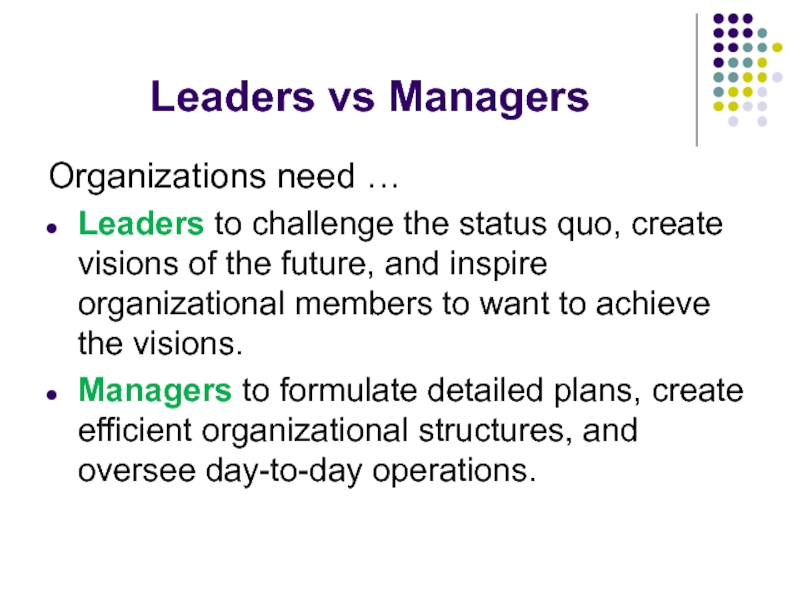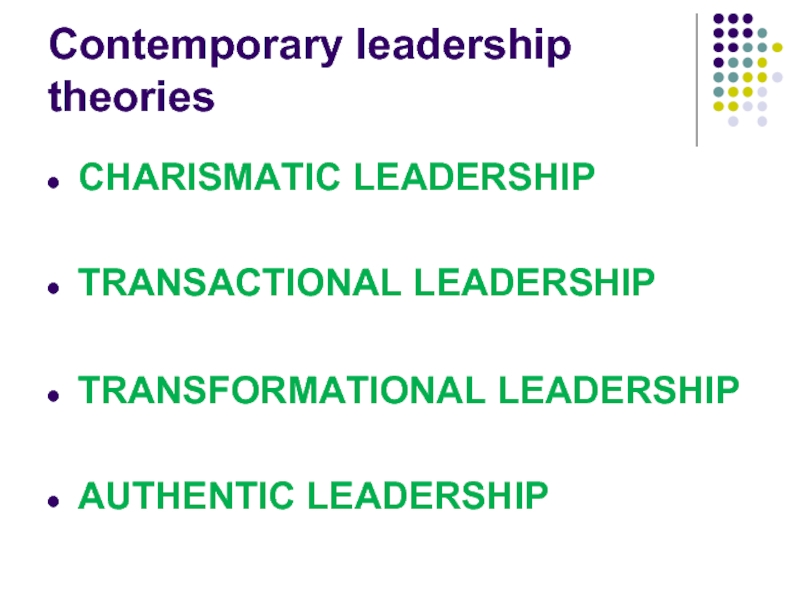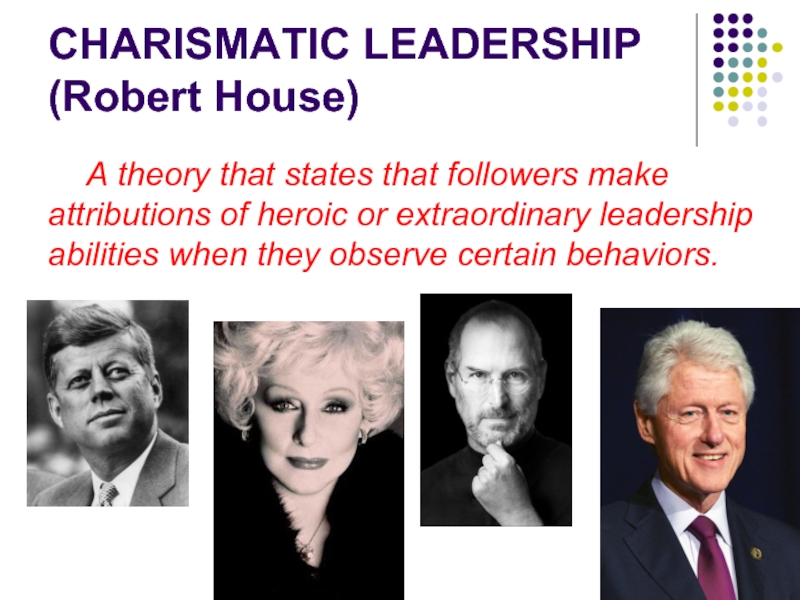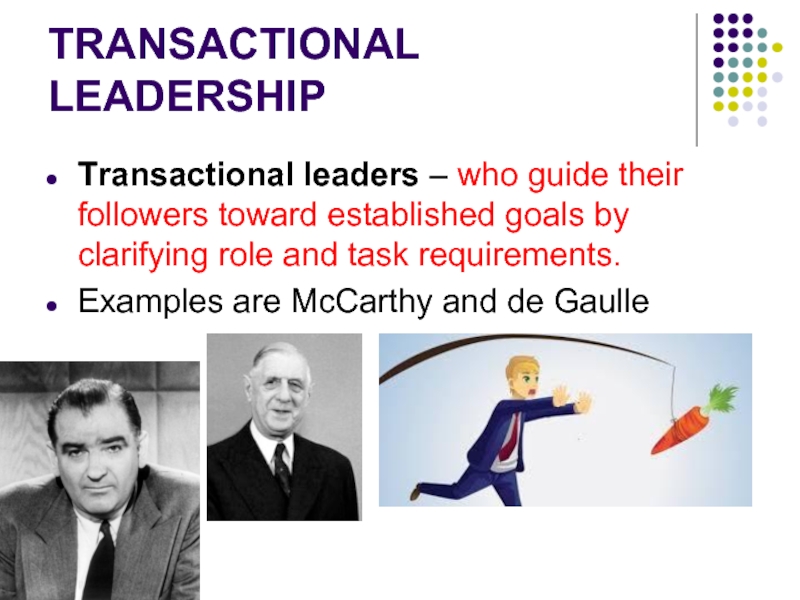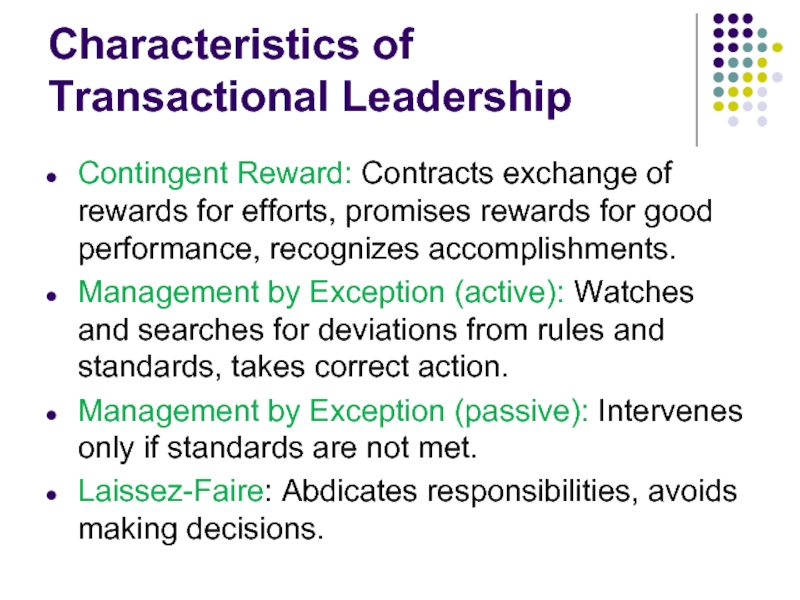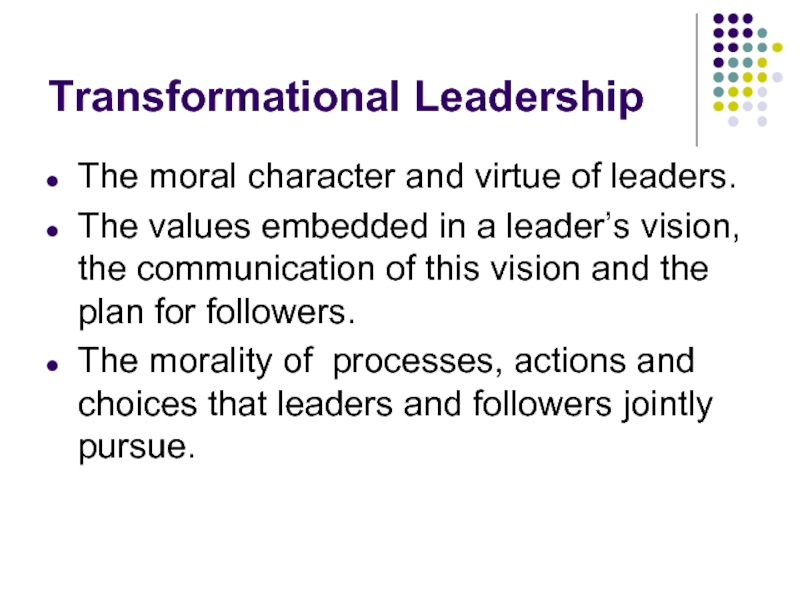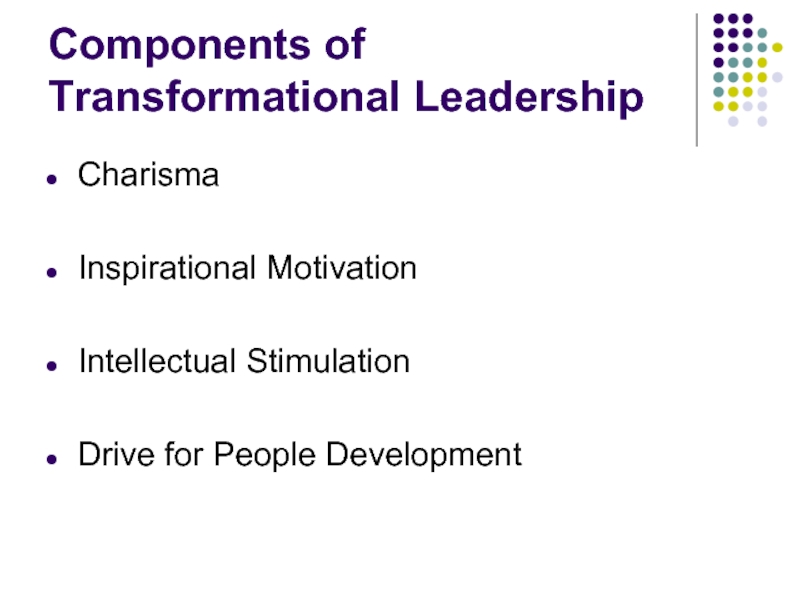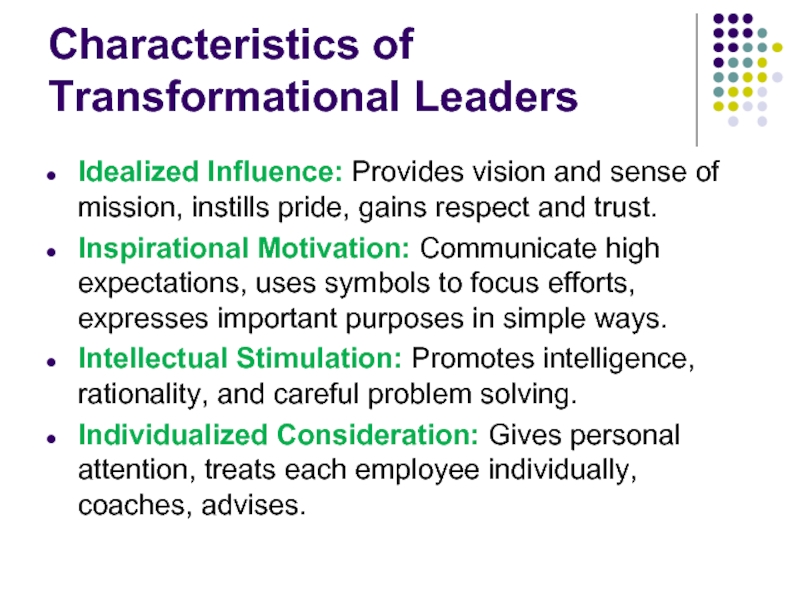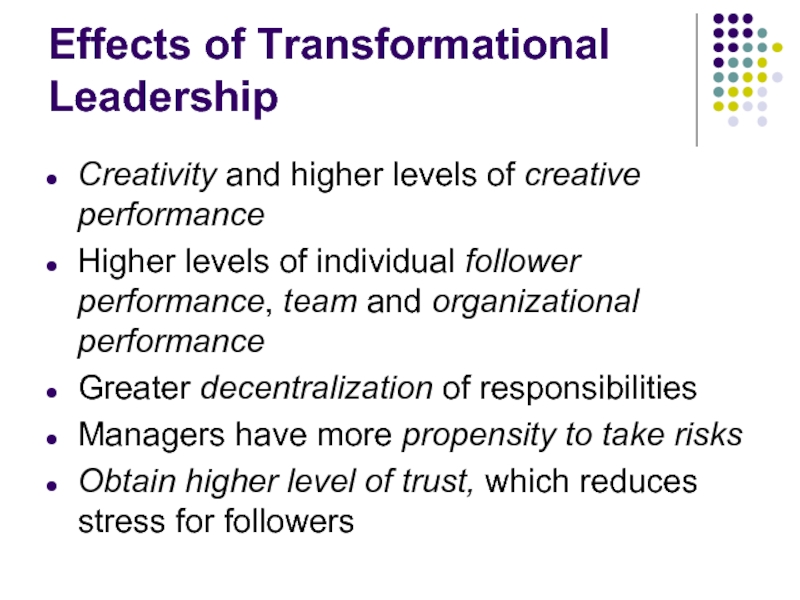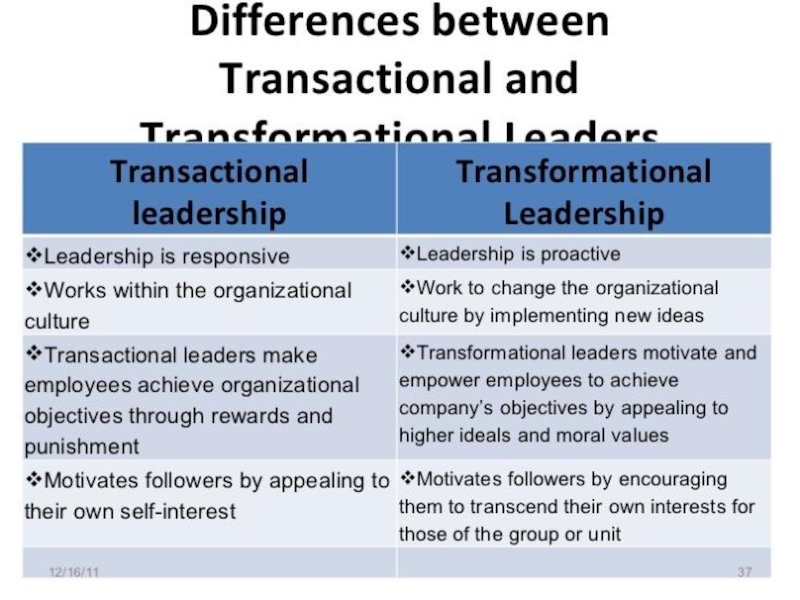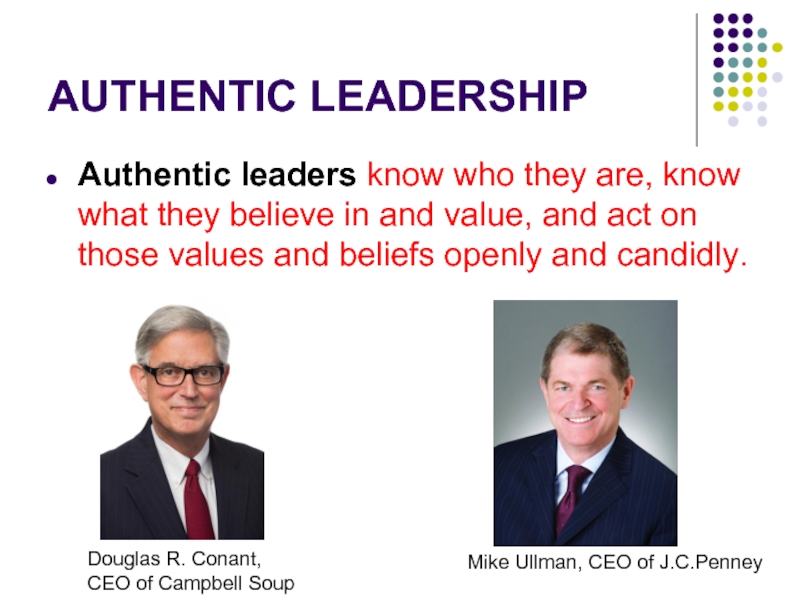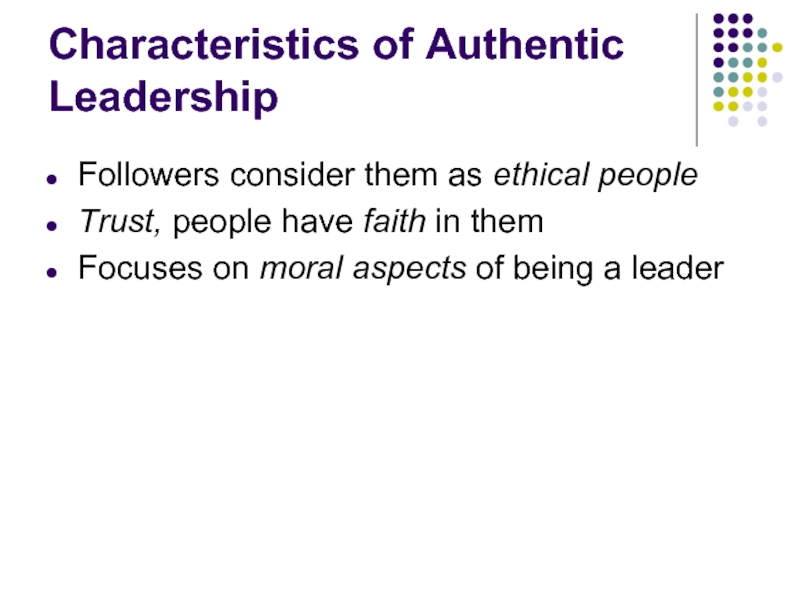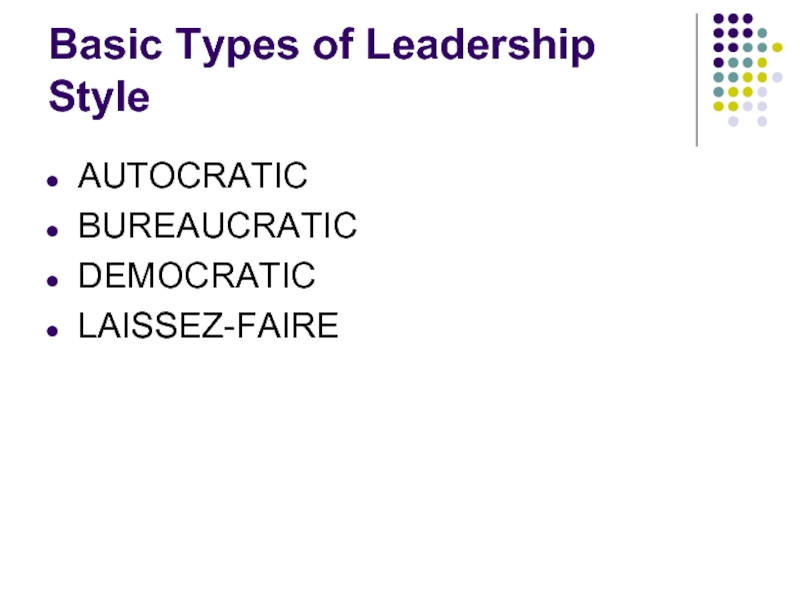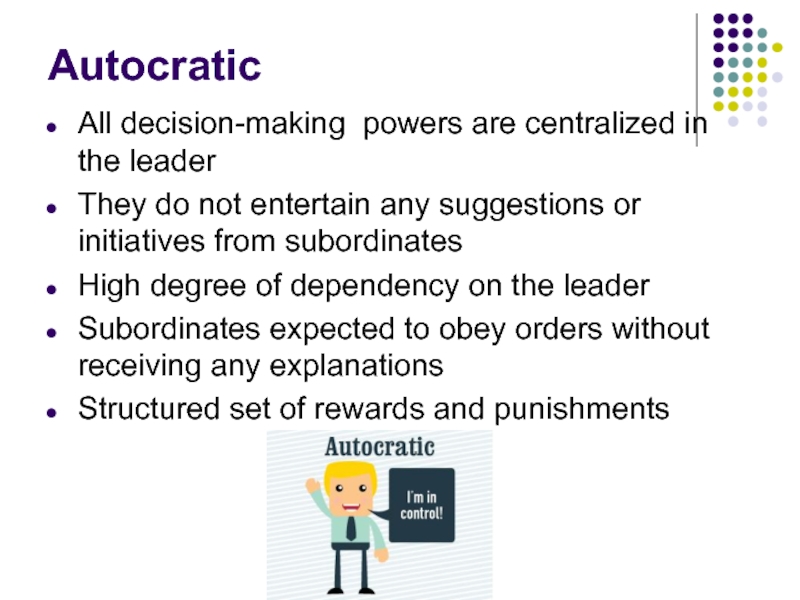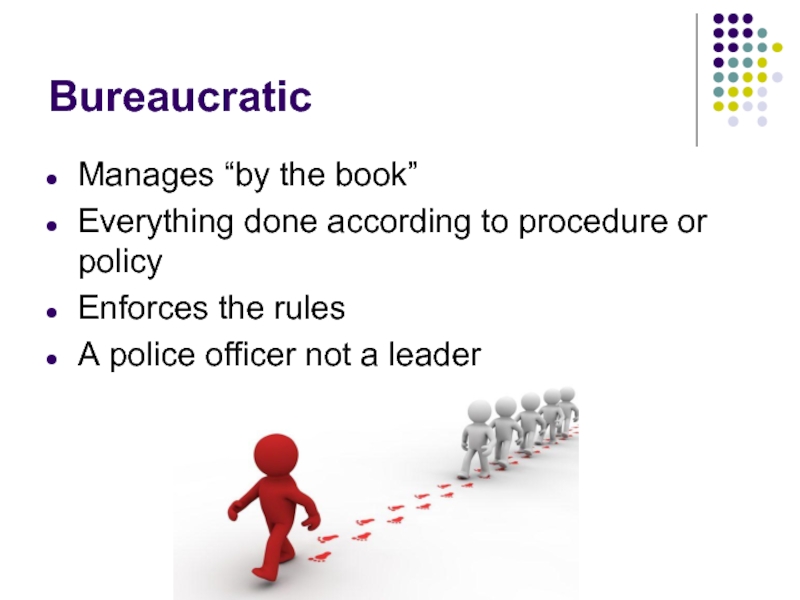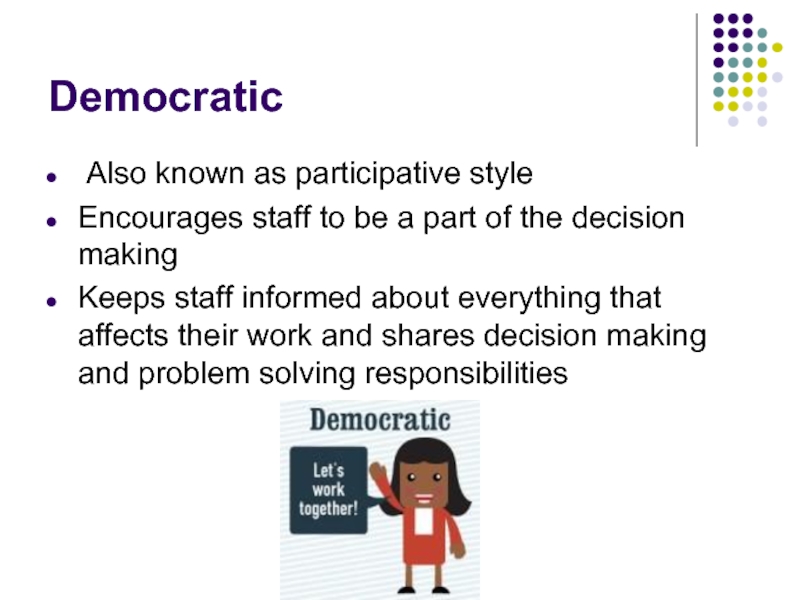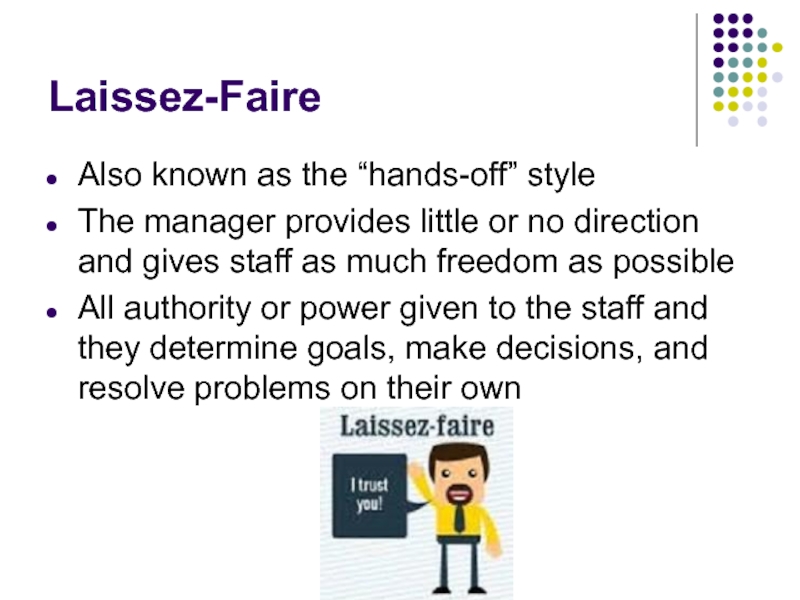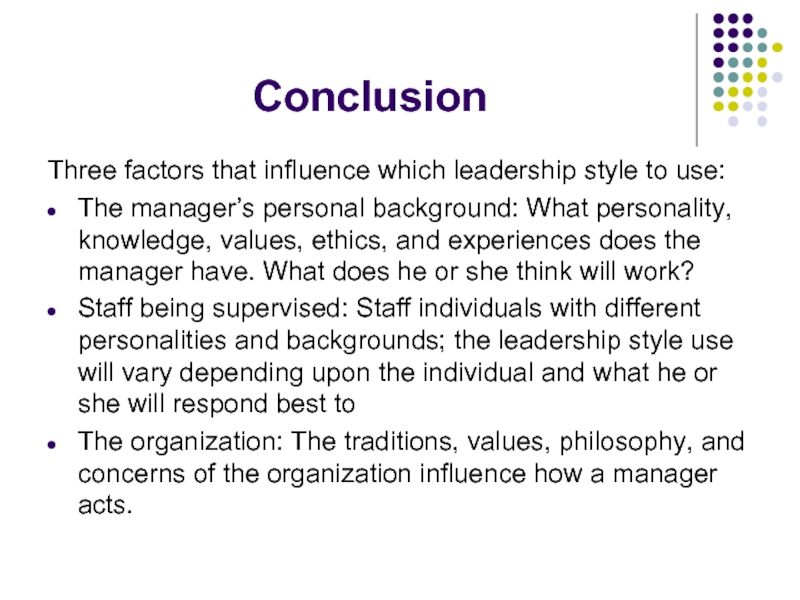- Главная
- Разное
- Дизайн
- Бизнес и предпринимательство
- Аналитика
- Образование
- Развлечения
- Красота и здоровье
- Финансы
- Государство
- Путешествия
- Спорт
- Недвижимость
- Армия
- Графика
- Культурология
- Еда и кулинария
- Лингвистика
- Английский язык
- Астрономия
- Алгебра
- Биология
- География
- Детские презентации
- Информатика
- История
- Литература
- Маркетинг
- Математика
- Медицина
- Менеджмент
- Музыка
- МХК
- Немецкий язык
- ОБЖ
- Обществознание
- Окружающий мир
- Педагогика
- Русский язык
- Технология
- Физика
- Философия
- Химия
- Шаблоны, картинки для презентаций
- Экология
- Экономика
- Юриспруденция
Leadership презентация
Содержание
- 1. Leadership
- 2. Nonsanctioned leadership – the ability to
- 3. What is the difference between leaders and managers in organization?
- 4. Leaders vs Managers Organizations need … Leaders
- 5. MANAGEMENT is doing things right;
- 6. Contemporary leadership theories CHARISMATIC LEADERSHIP TRANSACTIONAL
- 7. CHARISMATIC LEADERSHIP (Robert House) A theory that
- 8. Characteristics of Charismatic Leaders Have a vision
- 9. Are Charismatic Leaders Born or Made? 1
- 10. TRANSACTIONAL LEADERSHIP Transactional leaders – who guide
- 11. Characteristics of Transactional Leadership Contingent Reward: Contracts
- 12. TRANSFORMATIONAL LEADERSHIP Transformational leaders – who inspire
- 13. Transformational Leadership The moral character and virtue
- 14. Components of Transformational Leadership Charisma Inspirational
- 15. Characteristics of Transformational Leaders Idealized Influence: Provides
- 16. Effects of Transformational Leadership Creativity and higher
- 18. AUTHENTIC LEADERSHIP Authentic leaders know who they
- 19. Characteristics of Authentic Leadership Followers consider them
- 20. Basic Types of Leadership Style AUTOCRATIC BUREAUCRATIC DEMOCRATIC LAISSEZ-FAIRE
- 21. Autocratic All decision-making powers are centralized in
- 22. Bureaucratic Manages “by the book” Everything done
- 23. Democratic Also known as participative style Encourages
- 24. Laissez-Faire Also known as the “hands-off” style
- 25. Which leadership style is this? https://www.youtube.com/watch?v=Bv16yctXaFM https://www.youtube.com/watch?v=8YtpTK-AFoQ
- 26. Conclusion Three factors that influence which leadership
Слайд 2
Nonsanctioned leadership – the ability to influence that arises outside the
formal structure of the organization – is often as important or more important than formal influence.
So, leaders can emerge from within a group as well as by formal appointment.
So, leaders can emerge from within a group as well as by formal appointment.
Слайд 4Leaders vs Managers
Organizations need …
Leaders to challenge the status quo, create
visions of the future, and inspire organizational members to want to achieve the visions.
Managers to formulate detailed plans, create efficient organizational structures, and oversee day-to-day operations.
Managers to formulate detailed plans, create efficient organizational structures, and oversee day-to-day operations.
Слайд 6Contemporary leadership theories
CHARISMATIC LEADERSHIP
TRANSACTIONAL LEADERSHIP
TRANSFORMATIONAL LEADERSHIP
AUTHENTIC LEADERSHIP
Слайд 7CHARISMATIC LEADERSHIP (Robert House)
A theory that states that followers make attributions
of heroic or extraordinary leadership abilities when they observe certain behaviors.
Слайд 8Characteristics of Charismatic Leaders
Have a vision
Willing to take personal risks to
achieve that vision
Sensitive to follower needs
Exhibit extraordinary behaviors
Sensitive to follower needs
Exhibit extraordinary behaviors
Слайд 9Are Charismatic Leaders Born or Made?
1 – develop an aura of
charisma by maintaining an optimistic view; using passion as a catalyst for generating enthusiasm; and communicating with the whole body, not just with words.
2 – draw others in by creating a bond that inspires them to follow.
3 – bring out the potential in followers by tapping into their emotions.
2 – draw others in by creating a bond that inspires them to follow.
3 – bring out the potential in followers by tapping into their emotions.
Слайд 10TRANSACTIONAL LEADERSHIP
Transactional leaders – who guide their followers toward established goals
by clarifying role and task requirements.
Examples are McCarthy and de Gaulle
Examples are McCarthy and de Gaulle
Слайд 11Characteristics of Transactional Leadership
Contingent Reward: Contracts exchange of rewards for efforts,
promises rewards for good performance, recognizes accomplishments.
Management by Exception (active): Watches and searches for deviations from rules and standards, takes correct action.
Management by Exception (passive): Intervenes only if standards are not met.
Laissez-Faire: Abdicates responsibilities, avoids making decisions.
Management by Exception (active): Watches and searches for deviations from rules and standards, takes correct action.
Management by Exception (passive): Intervenes only if standards are not met.
Laissez-Faire: Abdicates responsibilities, avoids making decisions.
Слайд 12TRANSFORMATIONAL LEADERSHIP
Transformational leaders – who inspire followers to transcend their own
self-interest and who are capable of having a profound and extraordinary effect on followers.
Слайд 13Transformational Leadership
The moral character and virtue of leaders.
The values embedded in
a leader’s vision, the communication of this vision and the plan for followers.
The morality of processes, actions and choices that leaders and followers jointly pursue.
The morality of processes, actions and choices that leaders and followers jointly pursue.
Слайд 14Components of Transformational Leadership
Charisma
Inspirational Motivation
Intellectual Stimulation
Drive for People Development
Слайд 15Characteristics of Transformational Leaders
Idealized Influence: Provides vision and sense of mission,
instills pride, gains respect and trust.
Inspirational Motivation: Communicate high expectations, uses symbols to focus efforts, expresses important purposes in simple ways.
Intellectual Stimulation: Promotes intelligence, rationality, and careful problem solving.
Individualized Consideration: Gives personal attention, treats each employee individually, coaches, advises.
Inspirational Motivation: Communicate high expectations, uses symbols to focus efforts, expresses important purposes in simple ways.
Intellectual Stimulation: Promotes intelligence, rationality, and careful problem solving.
Individualized Consideration: Gives personal attention, treats each employee individually, coaches, advises.
Слайд 16Effects of Transformational Leadership
Creativity and higher levels of creative performance
Higher levels
of individual follower performance, team and organizational performance
Greater decentralization of responsibilities
Managers have more propensity to take risks
Obtain higher level of trust, which reduces stress for followers
Greater decentralization of responsibilities
Managers have more propensity to take risks
Obtain higher level of trust, which reduces stress for followers
Слайд 18AUTHENTIC LEADERSHIP
Authentic leaders know who they are, know what they believe
in and value, and act on those values and beliefs openly and candidly.
Douglas R. Conant,
CEO of Campbell Soup
Mike Ullman, CEO of J.C.Penney
Слайд 19Characteristics of Authentic Leadership
Followers consider them as ethical people
Trust, people have
faith in them
Focuses on moral aspects of being a leader
Focuses on moral aspects of being a leader
Слайд 21Autocratic
All decision-making powers are centralized in the leader
They do not entertain
any suggestions or initiatives from subordinates
High degree of dependency on the leader
Subordinates expected to obey orders without receiving any explanations
Structured set of rewards and punishments
High degree of dependency on the leader
Subordinates expected to obey orders without receiving any explanations
Structured set of rewards and punishments
Слайд 22Bureaucratic
Manages “by the book”
Everything done according to procedure or policy
Enforces the
rules
A police officer not a leader
A police officer not a leader
Слайд 23Democratic
Also known as participative style
Encourages staff to be a part of
the decision making
Keeps staff informed about everything that affects their work and shares decision making and problem solving responsibilities
Keeps staff informed about everything that affects their work and shares decision making and problem solving responsibilities
Слайд 24Laissez-Faire
Also known as the “hands-off” style
The manager provides little or no
direction and gives staff as much freedom as possible
All authority or power given to the staff and they determine goals, make decisions, and resolve problems on their own
All authority or power given to the staff and they determine goals, make decisions, and resolve problems on their own
Слайд 25Which leadership style is this?
https://www.youtube.com/watch?v=Bv16yctXaFM
https://www.youtube.com/watch?v=8YtpTK-AFoQ
Слайд 26Conclusion
Three factors that influence which leadership style to use:
The manager’s personal
background: What personality, knowledge, values, ethics, and experiences does the manager have. What does he or she think will work?
Staff being supervised: Staff individuals with different personalities and backgrounds; the leadership style use will vary depending upon the individual and what he or she will respond best to
The organization: The traditions, values, philosophy, and concerns of the organization influence how a manager acts.
Staff being supervised: Staff individuals with different personalities and backgrounds; the leadership style use will vary depending upon the individual and what he or she will respond best to
The organization: The traditions, values, philosophy, and concerns of the organization influence how a manager acts.

